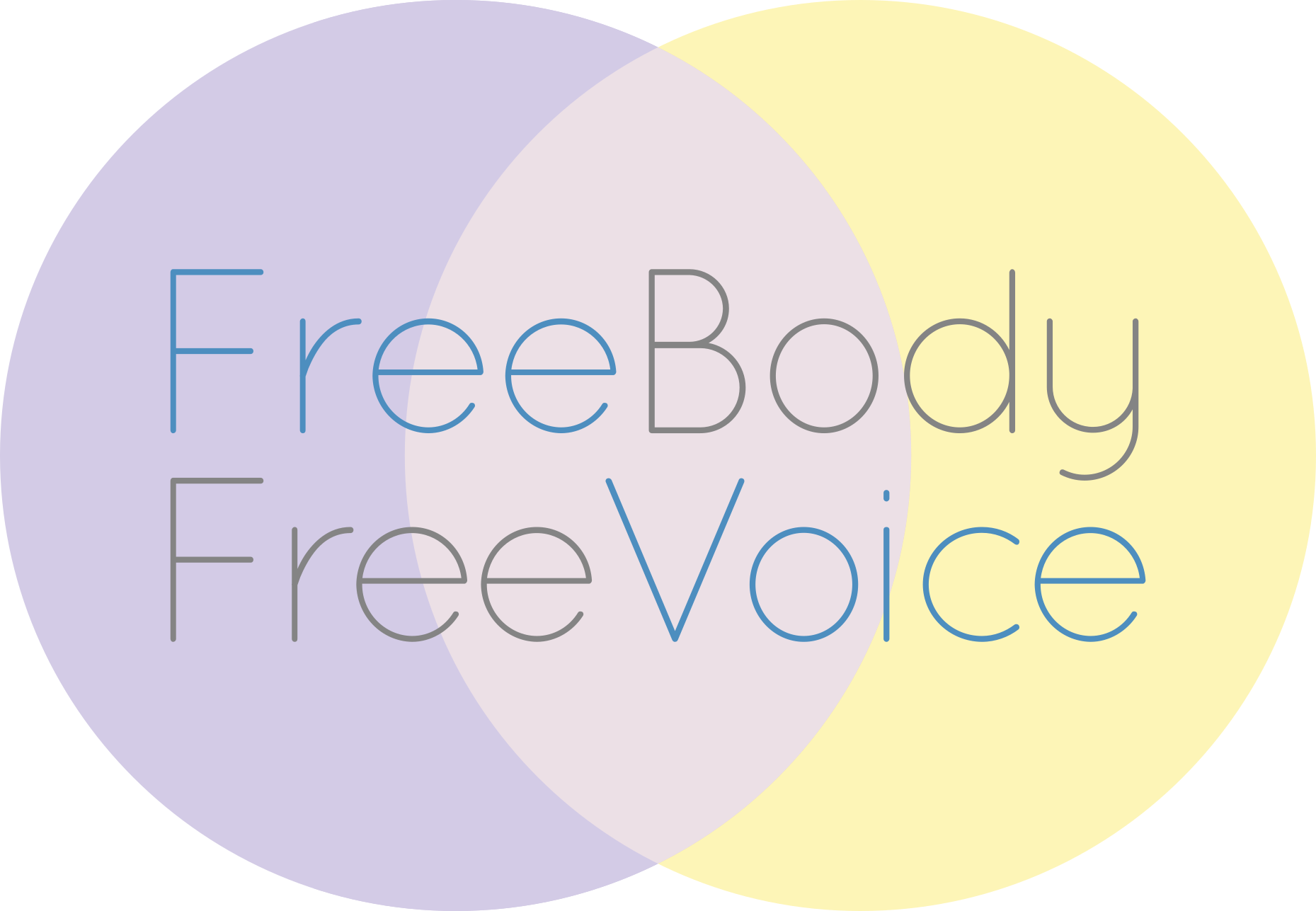Taking part in your own learning process
In the kind of healing work I do (including Voice-Enhancing Bodywork), one of my core challenges is discovering where in the client's body to concentrate my attention. Since the site where the client experiences symptoms such as pain is not always the location of the origin of the problem, I have to allow myself to be guided to the place where I can do the most good by signals from the client's body. Because of the continuity of tissues throughout the body, a restriction in any part can potentially affect any other part. For example, the sciatica (low back/leg pain) of a recent client turned out to have arisen as a compensatory response to neck trauma the client underwent during throat-cancer radiation therapy. Only when I addressed the neck problem did the low back situation begin to shift.
The continuity of body tissues also means that I can eventually feel through to a restriction in any part from any other part. In the case of the client with sciatica, I placed my hand on his symptomatic area (right side of low back) and felt a pull of tension up to his left upper chest. From there, I felt a pull up into the left side of his head just behind the ear. That was where the main restriction was, left over from the trauma of the radiation therapy, and that was where I had to begin my healing work to have the greatest effect on the low-back symptoms.
The kind of "homing-in" process I have described is effective, not to mention fascinating, but not so efficient in all cases. If I hadn't noticed the pulls that eventually led me up to the client's head where the problems were originating, I could have spend a lot of futile session time trying to get the low back to release. Luckily, there are techniques called "general listening" which allow me to discover in a matter of moments the most productive starting place before I even begin my treatment.
There is a similar technique available in Alexander and voice instruction for homing in on an effective starting place for each lesson, but it requires input from the student.
In fact, this technique IS the input of the student—you—which can come in virtually any form: a question, a demonstration of a problem you've been experiencing, a statement about how you've been using what we covered in your last lesson.
Of course, I can teach without such input, and do all the time. Over my years of teaching, I have developed a toolbox of ways to begin lessons "cold." Starting from, say, a simple movement (in an Alexander lesson) or a simple vocal exercise (in a voice lesson), randomly selected, we will gradually uncover something productive to work with, and can then home in on the core of the issue.
If you, however, come in with a "seed" idea, we can start the lesson a few levels closer to the core of an issue that is likely to have particular meaning for you. Your thinking, revealed through your words, provides clues leading to more productive starting places for our work together. It makes sense that whatever has been alive in your thinking lately will give us a quicker way in to where the juicy issues lie than a randomly selected idea, if for no other reason than that we will be working with something you are already interested in. (As opposed to what I am most interested in!)
I believe that I more easily access my best teaching when my students provide such a starting place. I can think of some very rich lessons that developed lately out of students' start-of-lesson input. Suzanne, a voice student who is also teaching singing, often comes in with questions about how to convey vocal principles to her students which shine light onto her own thinking process. David, an Alexander student, has been recording his lessons and transcribing key ideas onto paper, which he reviews throughout the week and reads to me at the beginning of the next lesson. Through this process, I can tune into what David has been finding interesting and help him to further develop his own process of thought and discovery. Since he has been doing this, his progress has deepened and sped up dramatically, and he is moving in a much freer and more dynamic way.
I think we all, as students, have an (often subconscious) insight into what we need. I began my last voice lesson by asking my teacher (the brilliant and delightful Donna Reid) for advice on demonstrating a bright falsetto sound to my students. The exploration that arose out of my question uncovered some deep misconceptions in my thinking about falsetto that allowed me to discard a futile, effort-based approach and take on a technique based more firmly in ease. This lesson developed into one of those watershed experiences in which many problems are overcome simultaneously. My highest and lowest notes have gained in ease and power and I have discovered how to access a richer-sounding speaking voice easily and consistently. I did not consciously realize that all of these benefits would arise out of my question regarding a chesty falsetto, but surely something in me knew that this particular question would lead me in a productive direction.
Something in you knows, too, what you need to explore. Share it with me at the start of your next lesson.
